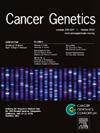71.用于下游细胞遗传学检测的自动细胞计数器的验证
IF 1.4
4区 医学
Q4 GENETICS & HEREDITY
引用次数: 0
摘要
在培养前对血液和骨髓样本中的血细胞(WBC)进行计数有助于细胞遗传学实验室工作流程、产量和下游检测质量的标准化。然而,传统的细胞计数方法在速度和准确性上都有局限性,这促使人们寻找一种高通量、可靠的替代方法。在此,我们介绍了两款用于高通量细胞遗传学实验室的自动荧光细胞计数仪器(Cellaca MX 和 DeNovix CellDrop FL)的验证结果。这两款仪器利用成像细胞计数原理和吖啶橙/碘化丙啶(AOPI)染色来评估细胞度和活力,无需裂解无核细胞。两台仪器均通过了一系列性能标准的验证,包括准确度、精确度、试剂稳定性、细胞度范围和细胞遗传培养(有丝分裂指数)性能。Cellaca MX 首先与传统的 Coulter 计数器进行了对比验证,随后 CellDrop FL 与 Cellaca MX 进行了对比验证。使用临床和测试方法对代表临床诊断的验证样本进行计数,样本中要有足够的细胞,以便同时进行培养。为保证准确性,至少使用了 10 个样本,并对内部体积/细胞度阈值进行了评估。同时进行的培养物在滴落和染色后进行有丝分裂指数评估,以评估质量。用于接种的细胞度范围为 1M 细胞/毫升。这两种仪器在整个临床样本细胞度范围内都能可靠运行。我们的工作表明,采用 AOPI 染色剂的自动荧光细胞计数仪器可以在高通量环境下提供准确、可重复的结果。本文章由计算机程序翻译,如有差异,请以英文原文为准。
71. Validation of automated cell counter instruments for downstream cytogenetic testing
Counting while blood cells (WBCs) from blood and bone marrow samples before culturing aids in standardizing workflows, yields, and quality of downstream testing in the cytogenetics laboratory. However, traditional cell counting methods are limited in speed and accuracy, prompting the search for a high-throughput, reliable replacement method. Here, we describe the results from validations of two automated fluorescent cell counting instruments (Cellaca MX and DeNovix CellDrop FL) for use in a high-throughput cytogenetics laboratory setting. These instruments utilize imaging cytometry principles and Acridine Orange/Propidium Iodide (AOPI) stains for assessing cellularity and viability assessment and do not require lysing of non-nucleated cells. Both instruments underwent validation incorporating a range of performance criteria including accuracy, precision, reagent stability, cellularity range, and cytogenetic culture (mitotic index) performance. The Cellaca MX was initially validated against a traditional Coulter counter, followed by the validation of the CellDrop FL compared to the Cellaca MX. Validation samples representing the clinical diagnostic encounter and with sufficient cellularity to set up concurrent cultures were counted using the clinical and test methods. A minimum of 10 samples were used for accuracy and internal volume/cellularity thresholds were evaluated. Concurrent cultures were evaluated for mitotic index following dropping and staining to assess quality. Ranges of cellularity used for inoculums were established to culture at 1M cells/mL. Both instruments have shown reliable operation across the full clinical range of sample cellularity. Our work shows automated fluorescent cell counting instruments employing AOPI stains can provide accurate and reproducible results in a high throughput setting.
求助全文
通过发布文献求助,成功后即可免费获取论文全文。
去求助
来源期刊

Cancer Genetics
ONCOLOGY-GENETICS & HEREDITY
CiteScore
3.20
自引率
5.30%
发文量
167
审稿时长
27 days
期刊介绍:
The aim of Cancer Genetics is to publish high quality scientific papers on the cellular, genetic and molecular aspects of cancer, including cancer predisposition and clinical diagnostic applications. Specific areas of interest include descriptions of new chromosomal, molecular or epigenetic alterations in benign and malignant diseases; novel laboratory approaches for identification and characterization of chromosomal rearrangements or genomic alterations in cancer cells; correlation of genetic changes with pathology and clinical presentation; and the molecular genetics of cancer predisposition. To reach a basic science and clinical multidisciplinary audience, we welcome original full-length articles, reviews, meeting summaries, brief reports, and letters to the editor.
 求助内容:
求助内容: 应助结果提醒方式:
应助结果提醒方式:


